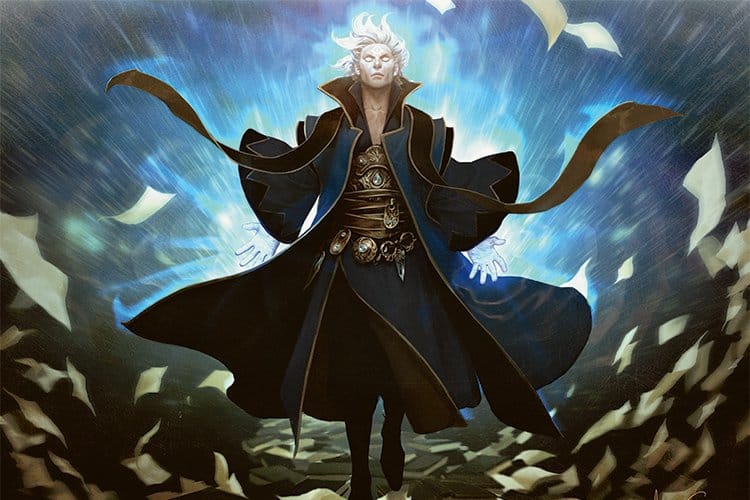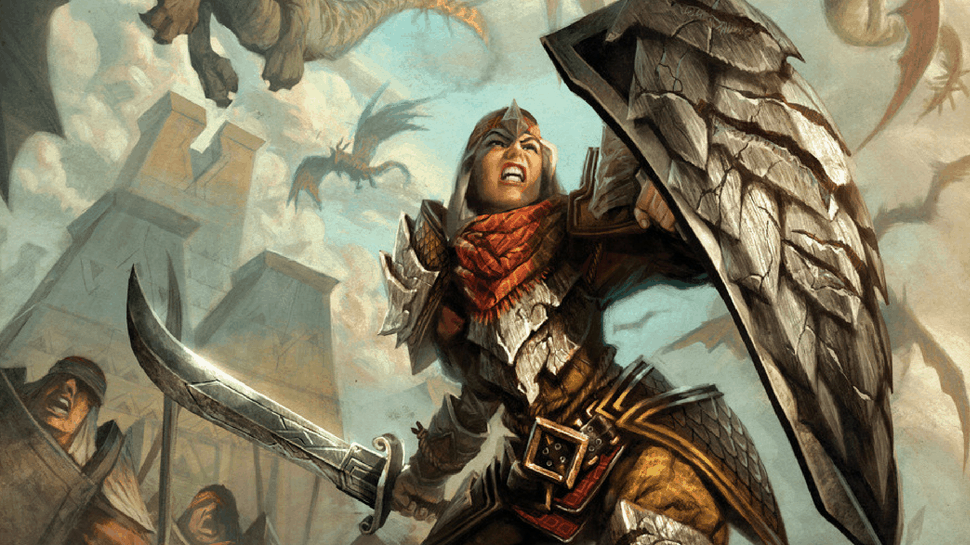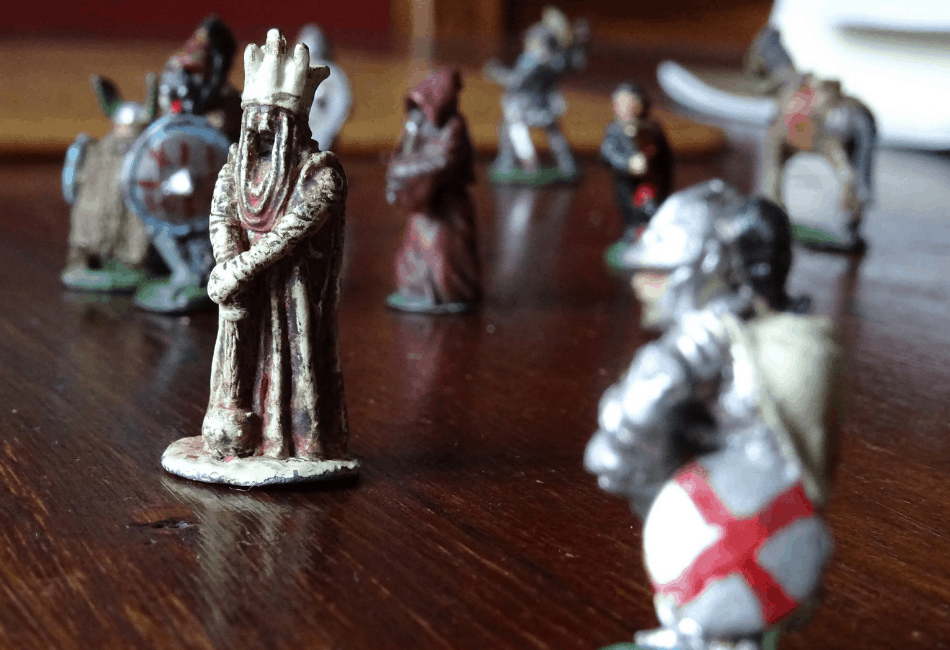When you make a character in D&D, you pick a playable race, a class, and a background. Your class determines what you can do. You might be a bard who harnesses magic through your music or a warlock who has made a pact with an otherworldly entity.
Multiclassing, as the name suggests, is an optional rule in D&D that allows you as a player to combine two or more classes for your character. Although this is technically an optional rule, most DMs allow players to multiclass in their game. Welcome to a DnD Multiclass Guide.
Should You Multiclass?
There are two main reasons for multiclassing in D&D: optimizing and role-playing.
Since multiclassing allows you to gain features from multiple classes at the same time, you might recognize that your character has a weakness or gap in their abilities and multiclassing will address this. Moreover, you might have a powerful character who will become even more powerful by multiclassing.
Alternatively, you might want to multiclass for roleplaying reasons. Perhaps you are playing a wizard who gets fed up with studying magic and makes a pact to become a warlock or you are playing a fighter who has an encounter with a divine being and multiclasses into a cleric. These options might not make your character exceptionally powerful but instead reflects the story of the character.
How Does Multiclassing Work?
When your character levels up, instead of adding the features of the next level of your class, you add the 1st level features of the new class to your character. For example, a Level 5 fighter reaches Level 6. Instead of becoming a Level 6 fighter, they decide to put that new level in cleric. They then become a fighter 5 / cleric 1, representing five levels in fighter and 1 level in cleric.

Prerequisites
To be able to take a level in a new class, you must make the prerequisite of that class. The prerequisite equates to having at least a 13 in the primary ability score for that class. For example, to multiclass into a wizard, you need to have an Intelligence score of at least 13. For classes with two primary ability scores, you need to have at least 13 in both.
Leveling Up
To level up your multi-classed character, you need to gain enough experience points for your character level to level up. For example, a fighter 5 / cleric 1 cannot gain 300 XP to gain another level in cleric. They are a 6th level character and need a total of 9,000 XP to reach level 7, at which point they will decide whether to gain a level in fighter, cleric, or a third class for which they qualify.
Hit Points and Hit Dice
When you take a level in a new class, you gain a hit die of the new level. You do not get the hit points as if you were a 1st level character but instead roll it to determine your new maximum hit points. If the hit dice of your levels are different, you maintain each of them as your pool of hit dice. For example, a barbarian 5 / wizard 4 would have five d12 and four d6 hit dice.
Proficiency Bonus
Your proficiency bonus scales according to your character level, not your class level. The barbarian 5 / wizard 4 is still a 9th level character and therefore has a proficiency bonus of +4.
Multiclassing Proficiencies
When you multiclass, you do not gain all of the starting proficiencies of the new class. Instead, you gain a fraction of them to complement your character’s proficiencies. Most notably, you do not gain any new saving throw proficiencies from multiclassing.
Channel Divinity
If you can use Channel Divinity from a class and you multiclass to gain new Channel Divinity options, you do not gain more uses of Channel Divinity. For example, a cleric gains two Channel Divinity options at level 2 and a paladin gains two options at level three. If you access both of these, you have four options when using this feature but still only one use of Channel Divinity until you finish a short or long rest.
Extra Attack
Similarly, if you gain the Extra Attack feature from multiple classes, they don’t stack. A fighter 5 / barbarian 5 can still only attack twice when they take the Attack action.
Unarmored Defense
If you gain the unarmored defense feature from multiple classes, they don’t stack. For example, a barbarian can have an AC of 10 + Dex + Con and a monk can have an AC of 10 + Dex + Wis. A barbarian/monk can choose which of these two options they benefit from but can’t add both together.
Spellcasting
If you have levels in multiple spellcasting classes, you gain a cumulative number of spells known or prepared and a sort of an average number of spell slots depending on the classes you take.

Spells Known and Prepared
The spells that you know or can prepare are kept separate from any other class levels you have. For example, if you have 3 levels in bard, you know two bard cantrips and six bard spells regardless of any other levels you have in another class.
When you cast these bard spells, you must use your bard spellcasting ability and an appropriate spellcasting focus. For example, a bard with levels in the wizard cannot use a musical instrument or Charisma modifier when casting wizard spells.
Spell Slots
Determining how many spell slots you have as a multiclassed character requires you to add together the spellcasting prowess of the classes you have and determine your spell slots on the Multiclass Spellcaster table (PHB 165).
To determine your Multiclass Spellcaster level, add together each level in bard, cleric, druid, sorcerer, and wizard, half the levels in paladin and ranger (rounded down), half your levels in artificer (rounded up), and one-third of your levels in Eldritch Knight and Arcane Trickster (rounded down).
For example, a wizard 6 / ranger 5 / eldritch knight 4 adds 6 levels from wizard, 2 levels from ranger, and 1 level from Eldritch Knight for a total of 9 levels. Although the character is a 15th level character, their equivalent spell slots are equal to a 9th level full spellcaster.
The warlock’s Pact Magic feature gives you spell slots but isn’t considered Spellcasting like the other classes. If you have levels of warlock and another spellcaster like wizard, the spell slots remain separate from each other but you can cast warlock spells using wizard spell slots and vice versa.
Spell Slots But No Spells
Because your Spells Known and spell slots are calculated in different ways, this can lead to strange combinations. For example, a bard 10 / sorcerer 10 has all the spell slots of a 20th level full spellcasting but they only know up to 5th level spells. Spell slots of 6th level – 9th level can only be used for casting the spells they know at higher levels.
Multiclass Builds
Picking a second (or third) class for your character can be a big decision, especially since you are delaying progression in your original class. The following guide lists some decent multiclass options for a particular primary class. Some of them are powerful while others are fun ideas for characters.
Artificer
Artificers are one of the few classes reliant on good Intelligence scores, limiting what you can effectively multiclass into. Starting with proficiency in Constitution saving throws is great.
- Wizard. Two levels will get you access to subclass abilities like Portent and Chronal Shift. Consider starting as an Artificer, then going all the way as a wizard with proficiency in Constitution saving throws.
Barbarian
The barbarian’s class features rely on Strength to work and spellcasting doesn’t work when Raging.
- Bard. Although spellcasting doesn’t work while raging, Expertise and Cutting Words make you a grappling professional, using your reaction to debuff your opponent.
- Druid. Rage works with Wild Shape. Circle of the Moon plus Bear Totem equals the toughest Brown Bear (Check out this Brown Bear Guide) you’ve ever seen.
- Fighter. Action Surge and a Fighting Style align nicely with the barbarian abilities.
- Rogue. Sneak attack works with a finesse weapon, but it doesn’t specify that you have to use Dexterity when attacking with it. You can also get Expertise in Athletics.
Bard
Charisma-based casters tend to work well together. The bard has a terrible capstone feature, so multiclassing is quite attractive to undertake at some point.
- Paladin. Fuel your smites with the spell slots of a full caster.
- Rogue. Do you want to be good at every skill? This is great and if you pick the Scout subclasses, you get even more. The other way around is better.
- Sorcerer. Gaining access to metamagic is good for any spellcaster. However, starting as a sorcerer gives you proficiency in Constitution saving throws.
- Warlock. Even one level of hexblade fixes melee bards’ reliance on multiple ability scores and spellcasters’ low AC.
Cleric
As a full spellcaster, gaining access to high-level spells is one of the best things you can do.
- Artificer. One level for some wizard spells without sacrificing spell slots, three levels and you get a cannon.
- Wizard. One level for great utility options, Find Familiar, and two levels gain access to Portents or Chronal Shift.
Druid
- Barbarian. Unarmored Defense and Rage make you much more durable. This is especially good for Circle of the Moon druids.
- Ranger. Pick the Swarmkeeper subclass and play as a giant spider covered in spiders.
Fighter
- Barbarian. Especially decent if you’ve already got a high Strength and Constitution. Combine Great Weapon Master, Great Weapon Fighting, Reckless Attack, and Rage.
- Cleric. One or two levels in a cleric domain can fill a gap in your character from darkvision for 300 feet (Twilight) to repositioning your whole party (Order).
- Paladin. Play a paladin with proficiency in Constitution saving throws, crits on a 19 and 20, additional fighting style, and Action Surge.
- Ranger. The Gloomstalker’s Dread Ambusher ability combined with Action Surge makes for many attacks in the first round of combat.
- Rogue. Dexterity-based fighters gaining Sneak Attack is a dangerous thing.
- Wizard. Take two levels for ritual casting and a subclass feature. Portents from divination or Chronal Shift from the chronurgy are both great options.
Monk
Monks are already reliant on multiple ability scores and the number of ki points they have. Delaying progression in this is difficult to justify.
- Fighter. A couple of levels gives you Action Surge and Fighting Style.
- Rogue. Expertise and Sneak attack if you’re using a shortsword.
Paladin
- Barbarian. Reckless Attack gives you a constant source of advantage and you have a high AC to back it up.
- Bard. A Charisma-based spellcaster to fuel your smites plus skill proficiencies galore.
- Fighter. Another Fighting Style and Action Surge. The Champion subclass doubles your potential to score a critical hit.
- Sorcerer. Use Quickened Spell to cast Hold Person as a bonus action, then automatically score a crit and use a sorcerer spell slot to fuel a critical smite.
- Warlock. Fewer spell slots at a time, but they recharge after a short rest. Hexblades let you max out Charisma without worrying and Eldritch Blast gives you a reliable ranged attack.
Ranger
- Cleric. Access to Bless, heavy armor proficiency, other great abilities from only one or two levels.
- Fighter. Action Surge and Fighting Style both work well. With three levels, you can access incredible options from maneuvers to improved critical hits to an echo.
- Rogue. Pick Gloomstalker and Assassin and score critical hits on everyone before the other players even sit down at the table.
Rogue
- Bard. The ultimate skill monkey. Play a variant human, take the Skilled feat, the Scout subclass from rogue, the College of Lore from bard, and take one level in Knowledge Domain cleric. At level 7, you’re proficient in every skill, you have Expertise in six skills, and you’re half-proficient in everything else. Now just wait for Reliable Talent.
- Fighter. The archery fighting style and great subclass options at 3rd level make this a great option.
- Wizard. Play an Arcane Trickster who started learning and magic and just couldn’t get enough of it.
Sorcerer
Starting with proficiency in Constitution saving throws is a great option for many spellcasters. Start with this and branch out to other spellcasting classes, preferably a Charisma-based spellcaster.
- Bard. Beef up your bard by starting in sorcerer and expanding out. Pick College of Eloquence and talk smack as your bonus action before dropping a save-or-suck spell as your action.
- Paladin. Use Quickened Spell to cast Hold Person as a bonus action, then automatically score a crit and use a sorcerer spell slot to fuel a critical smite.
- Warlock. Warlock spell slots refresh after a short rest. You can convert spell slots into sorcery points. Never run out of sorcery points again.
Warlock
- Bard. With high Charisma, a bard multiclass can help you do all the talking for your party.
- Cleric. Don’t want to spend an invocation on Devil’s Sight? Get dark vision with a range of 300 feet and an aura of dim light instead.
- Paladin. Go for a hexblade warlock and take two levels in paladin to get smites.
- Sorcerer. This is great but you want to start with sorcerer for Constitution proficiency (see above).
Wizard
Wizards are based on spellcasting, making it hard to justify multiclassing.
- Artificer. One level in artificer gives you access to spells like Cure Wounds and Sanctuary without losing spell slots. Three levels and you can have a cannon.
- Cleric. Gain access to some healing and armor proficiencies. For something weird, pick the Forge Domain and get magic heavy armor.

F.A.Q.
Question: Is Multiclassing Worth It 5e?
Answer: Multiclassing in 5e is not as necessary as previous editions. For many players, multiclassing opens the door to new and unique options for your character. While not every multiclassing option is a good idea, the right combination can be more powerful than a single class.
Question: What Do You Need To Multiclass 5e?
Answer: The only prerequisite to multiclass is at least a 13 in the primary ability score of your new class. To multiclass into the fighter, you need at least a 13 in Strength or Dexterity. Classes like the paladin require you to have at least 13 in two primary ability scores (Strength and Charisma).
Question: What Is The Best Multiclass 5e?
Answer: The most powerful multiclass build is paladin 6 / hexblade warlock 1 / sorcerer 13. This build allows you to entirely use Charisma, score critical hits on 19 and 20, automatically score critical hits if Quickened Spell Hold Person and protect every ally on the battlefield while you do it.
Question: Why Is Multiclassing Bad?
Answer: Every time you multiclass, you are sacrificing the focus and high-level abilities of your class. For spellcasters, you are delaying learning high-level spells, which is a considerable sacrifice. You also give up the high-level features of your original class including the capstone ability, which can be significant.
Question: Can I Multiclass Into The Same Class?
Answer: No, you can only take levels in a class once and you can only choose one subclass for a given class. When you multiclass into different classes, you can pick subclasses at the appropriate levels for each of those classes.
Question: Can You Multiclass into 3 Classes?
Answer: Yes. As long as you meet the prerequisite for a class, you can multiclass into it. A character with 13 in every ability score could take one level in every class if they wanted to.
Summary
Multiclassing is a great customization rule for D&D players. Despite its popularity and widespread usage, it is technically an optional rule so you should check with your DM that it’s allowed at your tables.
You qualify for a class by having at least 13 in the class’s primary ability score. You don’t gain all of the starting proficiencies of your new class including saving throw proficiencies and you don’t gain any new equipment.
Multiclassing can be done to make your character more powerful and fully optimize your build, supplement your character’s weaknesses, or aid you in telling a story about a character and ignore the power gaming aspect of it.
Combining spell slots of multiple classes can lead to interesting results such as creating characters who have high-level spell slots but know no high-level spells.
As always, this is a guide for you to create a character that you would enjoy playing. It doesn’t have to be optimal or powerful to be fun but multiclassing opens the door to create incredibly unique characters.
- Armor of Agathys 5e Guide: What is Armor of Agathys? - August 3, 2022
- Oath of the Ancients 5e Guide - August 3, 2022
- Dissonant Whispers 5e Guide - July 20, 2022

